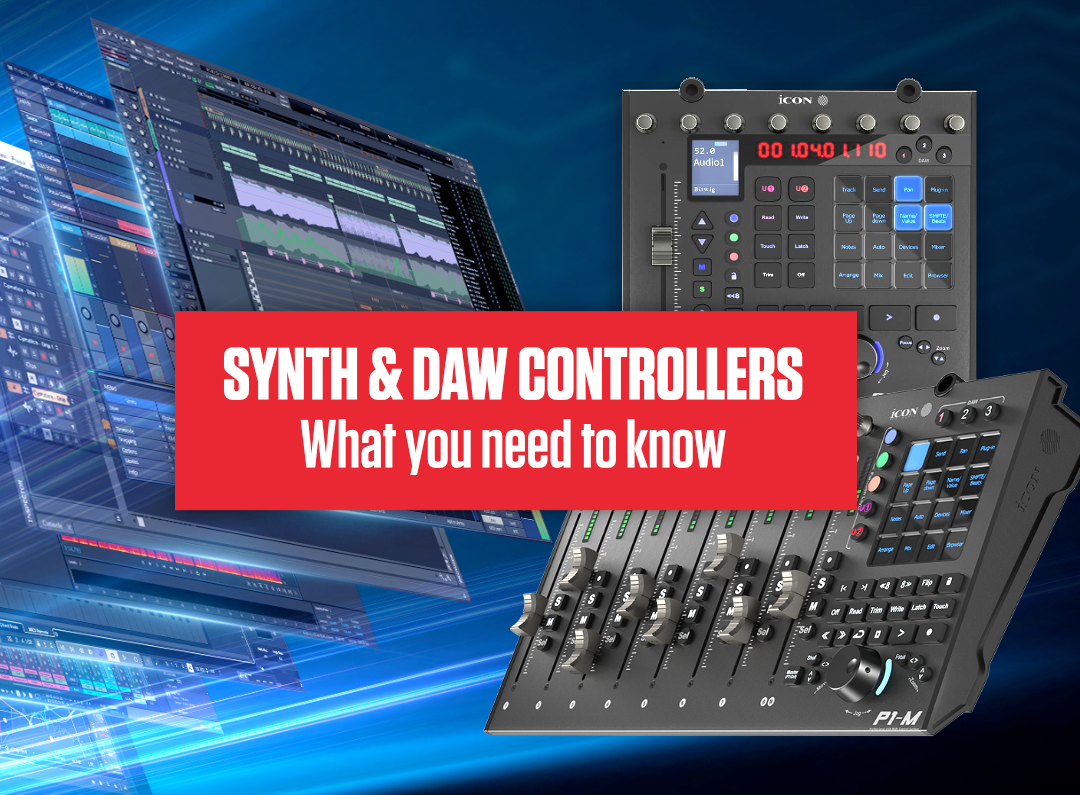Synth & DAW Controller: Use your sequencer like a hardware

7 tricks for your tailor-made setup
By customizing your controller to your personal preferences and work habits, you can create a customized setup that increases productivity and optimizes the work process. Here are some tips:
- Adjust mapping: Assign functions to the faders, knobs and buttons that perfectly suit the way you work.
- Save presets: Save profiles for different work phases such as recording, mixing or automation to seamlessly switch between setups.
- Use color coding: If your DAW controller has colored LEDs, you can use them to visually distinguish functions or channels. For example, assign colors to different tracks or instrument groups..
- Custom key assignments: Program buttons with frequently used functions such as remote control of the mixer, operating synths or plug-ins, or transport control if your controller supports it.
- Touchscreen adjustments: If your DAW controller has a touchscreen, adjust the display options to your liking. This could include selection of display modes, zoom levels, or arrangement of information.
- Adjust motor faders: DAW controllers with motorized faders often allow you to adjust the sensitivity or behavior of the faders to achieve the optimal mixing and automation experience.
- Test and optimize workflow: Experiment with different adjustments and changes. Test your optimized workflow and adjust further as needed to seamlessly integrate the DAW controller into your way of working.
![]()
The best DAW controller for you: 4 important questions answered
When you‘re working really hard on a project in the DAW, you sometimes wish you had
four computer mice and as many hands. DAW controllers help you easily have access to all the most important parameters and can thus speed up your workflow enormously. But what should you consider when buying and how exactly can these miracle devices revolutionize your creative process? You can find out all about it here!
1 Why should I use a DAW controller?
Using a DAW controller offers a variety of benefits that can significantly improve your overall music production process. With the right controller, operating your DAW is quicker and more intuitive. This can make it easier to set parameters precisely and speed up the production process compared to pure mouse and keyboard control.
2 What are the important criteria for buying a DAW controller?
Decisive criteria when buying a DAW controller are the number of channels, compatibility with the DAW and adaptability to individual needs. It is important to clarify which functions the hardware controller should control and what type of controls are needed for this. The number of controls, including faders, push switches and encoders, plays a key role. It is also important how deeply you can integrate the controller into the DAW: a good controller should support a variety of functions, including control of equalizers and other DAW-internal plug-ins. For models with motorized faders, you can save the fader positions in a project and quickly recall them.
3 What functions can a DAW controller control?
A DAW controller can control a wide range of functions in a DAW. Using physical faders and knobs, controllers provide precise control of parameters such as volume, pan position, equalizer settings and other important parameters. Additionally, some DAW controllers allow you to control virtual instruments, trigger drum samples, navigate through the arrangement, and adjust effect parameters. Some advanced models even have touchscreens that allow intuitive operation and control of various functions.
4 What are the most important protocols for DAW controllers?
There are various protocols for communication between DAW controllers and digital audio workstations. But stop! Not every DAW works with all protocols. For this reason, before buying a controller, you should make sure that it is compatible with the DAW you are using and the desired protocol. Some manufacturers also use their own protocols that are tailored to the functions of the controllers and the supported DAWs.
- MIDI (Musical Instrument Digital Interface): This dinosaur among protocols is used for basic control functions, via USB or classic MIDI ports.
- Mackie Control: Provides transport and fader control as well as access to mixer parameters, supported by many DAWs.
- MCU (Mackie Control Universal): Further development of the Mackie Control protocol with additional functions and expanded DAW compatibility.
- HUI (Human User Interface): Avid also does its own thing. This protocol was developed by Digidesign (now Avid) and shows its strengths particularly in Pro Tools. It allows advanced control of mixer functions and automation parameters.
- EuCon (Euphonix Control): Avid‘s protocol for software such as Pro Tools and Media Composer.
- OSC (Open Sound Control): The chameleon. An open protocol for flexible control of instruments, controllers and software, implemented in some DAWs and controllers.
- HID (Human Interface Device): Standard protocol for USB communication between computers and input devices, used by some modern DAW controllers.
![]()
Our recommendation for getting started: The DAW controllers Icon P1-Nano and P1-M
The two DAW controllers convinced us: Long motor faders, display and multifunctional jog wheel are solid features in this price range. There is also the extremely helpful touchscreen for up to 80 shortcuts, all of which can be freely assigned and named. This makes operation in the DAW much easier and faster, especially since the controllers are pleasantly compact and can therefore always be placed within easy reach in the desktop studio. The compact and affordable P1-Nano in particular receives an unreserved recommendation from us.
You can find the complete test report on the P1-Nano and P1-M here:
https://www.plugins-samples.com/blog/?article_id=668
Want more? Get more!



Subscribe to the digital edition of BEAT Magazine via Plugins-Samples.com and get more gear, in-depth workshops, reviews and 11 GB exclusive plugins and new sounds with every monthly issue!
Subscribe to Beat Magazine for only 4.99€ per month
